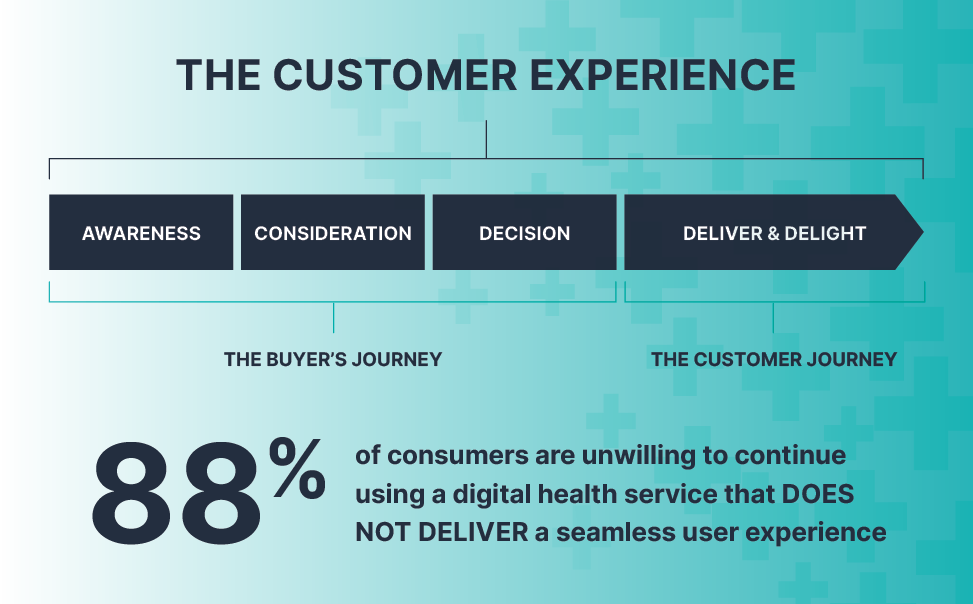Creating a welcoming digital front door for patients is about more than simply providing access. It’s designing an end-to-end patient journey that simplifies access to care and invigorates personal choice.
In 2017, Merrit Hawkins found that it took 24 days on average for patients to schedule appointments with their physicians—up from just 18.5 days in 2014. Flash forward to 2022 and it's easy to presume the situation has gotten much worse.
In many rural communities, such as the state of Vermont, wait times to see medical specialists can exceed two months, or even longer. Staffing shortages and physician burnout are major issues that many healthcare systems and patients continue to contend with in the wake of the COVID-19 pandemic.
Fortunately, for many patients and provider networks, virtual care appointments, which became a necessity during the public health emergency, have emerged as a vital lifeline. Telehealth services remove barriers to care and provide a safe and seamless way to connect patients and providers.
However, not all technologies are created equally and competition has never been more intense. More than 88% of patients confirm the quality of experience is an important factor in their decision to remain in care with a given provider.
Realizing the full potential of the industry-wide trend towards greater consumerization of care demands delivering truly invigorating end-to-end patient journeys. At this unique moment, our industry has the potential to simplify healthcare, enhance patient choice, and deliver a more robust and engaging experience for our customers.
To achieve that, it's essential that we work to create a wider and even more enticing digital front door, so that wherever patients access virtual services, the care they need is just a few clicks away. In this article, learn 3 ways virtual visits create a more engaging and enjoyable care experience for patients.

3 Ways Virtual Care Visits Improve Patient Experience
1. Virtual care patients enjoy on-demand services and clinicians with the capacity to meet them where they are.
On average, Americans spend 34 minutes driving to medical appointments; though 45% rely on public transportation which is likely to take even longer. That’s over an hour of time (or more) away from other obligations. For many families, scheduling in-person visits also require purchasing childcare services, which are often expensive and short supply across many regions.
In contrast, telehealth visits average around 13-15 minutes, can be completed using a personal computer or mobile device, do not require patients to pay for parking, and offer a much quicker way for patients to see physicians. Virtual healthcare empowers patients to access the services they need, in the quickest and easiest possible way.
2. Telehealth platforms deliver more personalized and person-centered care by offering self-help options.
Healthcare is a complex undertaking. It can be challenging for patients to find simple answers to the questions they have about their care outside of normally scheduled appointments. This is where digital health services come in.
By creating a highly engaging patient access center, your healthcare organization can provide patients with the means to contact their providers quickly and simply. This simple adjustment provides the questions your patients need answers to while improving clinical efficiency, reducing the cost of care, and enabling patients to take a more active role in the process.
3. Virtual visits democratize healthcare by improving access to specialists.
Many Americans live in communities without access to the medical professionals they need. Virtual visits overcome this by allowing patients to see the clinical experts they need without being limited by geography.
This in turn allows patients to choose the professionals they want to see and take a more proactive role in directing beneficial outcomes.
Learn More





